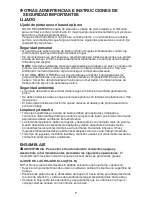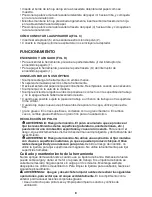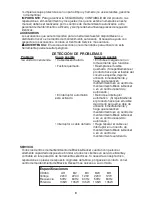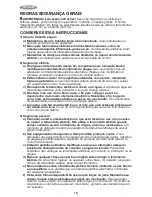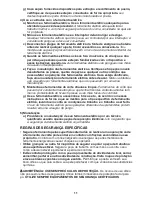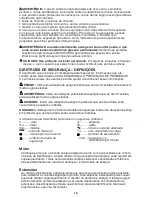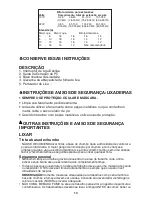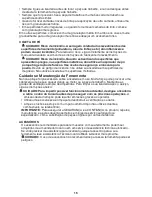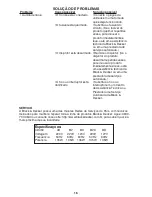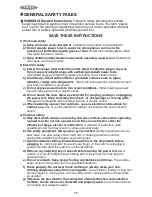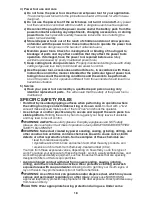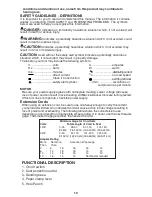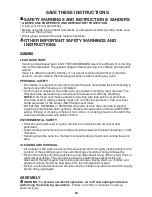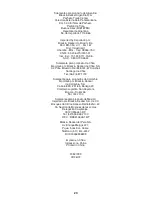
21
FITTING SANDING SHEETS (FIG. B)
NOTE: Never use the tool without a sanding sheet or accessory in place.
• Soften the sanding sheet by rubbing its non-abrasive side over the edge of a work top.
• Press the paper clamp levers (4) upwards to release them from the retaining grooves
and open the paper clamps by pressing them down.
• Place the sheet onto the sanding base, making sure that the holes in the sheet (if
applicable) line up with the holes in the base.
• Insert the edge of the sanding sheet into the front paper clamp as shown.
• Press the front paper clamp lever (4) up and locate it in the retaining groove.
• While keeping a slight tension on the sheet, insert the rear edge of the sheet into the
rear paper clamp.
• Press the rear paper clamp lever (4) up and locate it in the retaining groove.
CONNECTING A VACUUM CLEANER (FIG. C)
• Insert the adaptor (5) into the dust extraction outlet (2).
• Connect the hose (6) of the vacuum cleaner (not included) to the adaptor.
OPERATION
SWITCHING ON AND OFF (FIG. D)
• To switch the tool on, press the front part (I) of the on/off switch (1).
• To switch the tool off, press the rear part (O) of the on/off switch (1).
HINTS FOR OPTIMUM USE
• Always hold the tool with two hands as shown in figure E.
• Do not exert too much pressure on the tool.
• Regularly check the condition of the sanding sheet. Replace when necessary.
• Always sand with the grain of the wood.
• Always start your sander before it is in contact with the workpiece and do not switch it
off until after it has been lifted from the workpiece.
• Where possible, clamp the workpiece to a work bench or similar sturdy surface.
• When sanding new layers of paint before applying another layer, use extra fine grit.
• On very uneven surfaces, or when removing layers of paint, start with a coarse grit.
On other surfaces, start with a medium grit. In both cases, gradually change to a fine
grit for a smooth finish.
DUST COLLECTION
WARNING: Fire hazard. Collected sanding dust from sanding surface coatings
(polyurethane, linseed oil, etc.) can self-ignite and cause fire.
To reduce risk,
strictly follow sander manual and coating manufacturer's instructions.
WARNING: Fire hazard. When sanding wood that could contain nails or
when
sanding metal surfaces, do not use a vacuum cleaner because sparks are
generated. Use safety glasses and a dust mask.
Due to the danger of fire, do not
use your sander to sand magnesium surfaces. Do not use for wet sanding.
Tool Care And Maintenance
Never apply excessive force when you use your sander. Too much force can result in an
overload and cause damage to the motor or the workpiece. Always keep the air cooling
vents clear. To clean your finishing sander, proceed as follows:
WARNING: To prevent accidental operation, turn off and unplug sander before
performing the following operations.
Failure to do this could result in serious
personal injury.
• Use a clean dry paint brush to clear vents and ducts.
• Clean the housings using a clean damp cloth (do not use solvents, gas or turpentine.)
IMPORTANT:
To assure product SAFETY and RELIABILITY, repairs, maintenance and
adjustment should be performed by authorized service centers or other qualified service
personnel, always using identical replacement parts.

